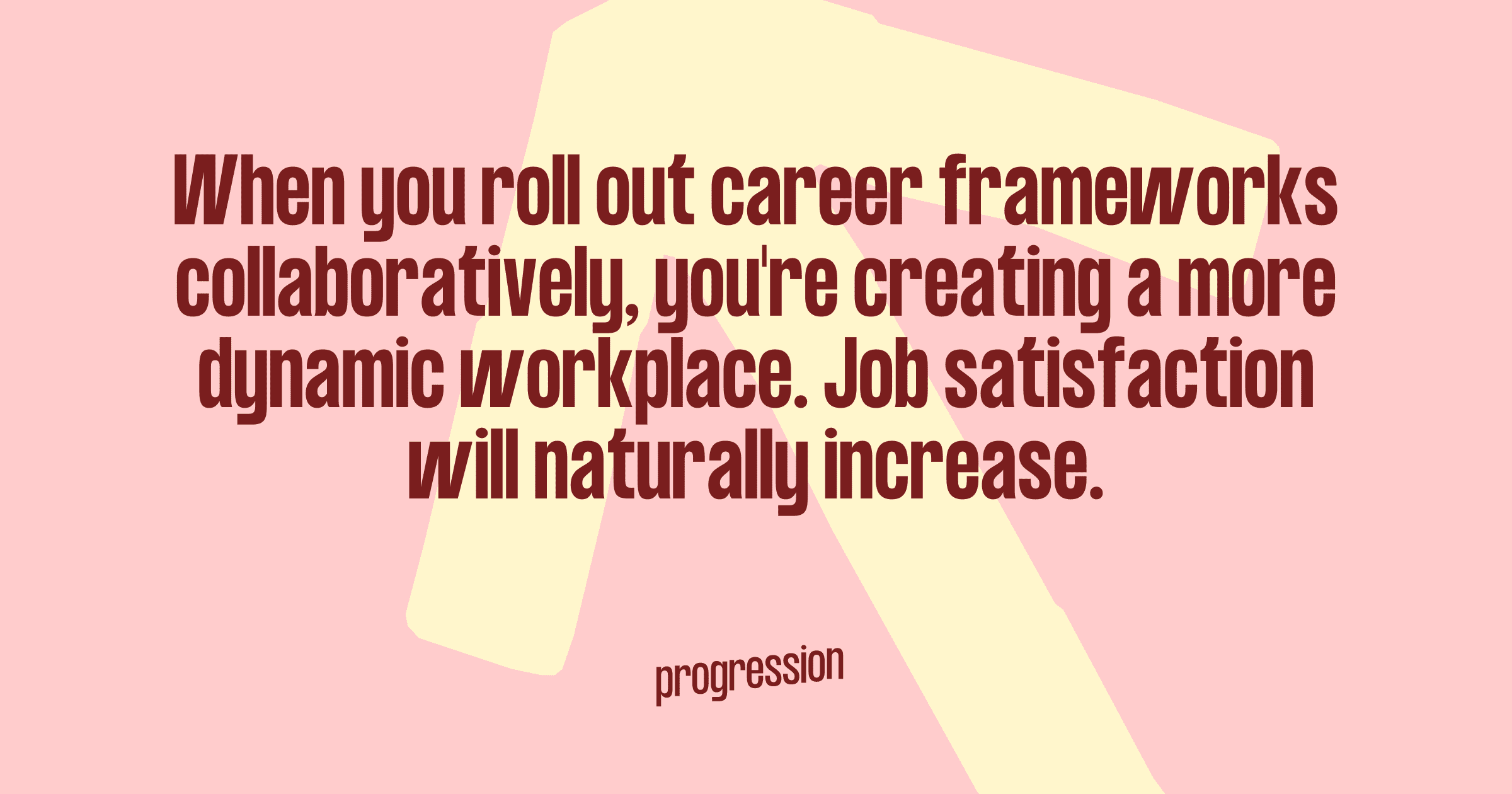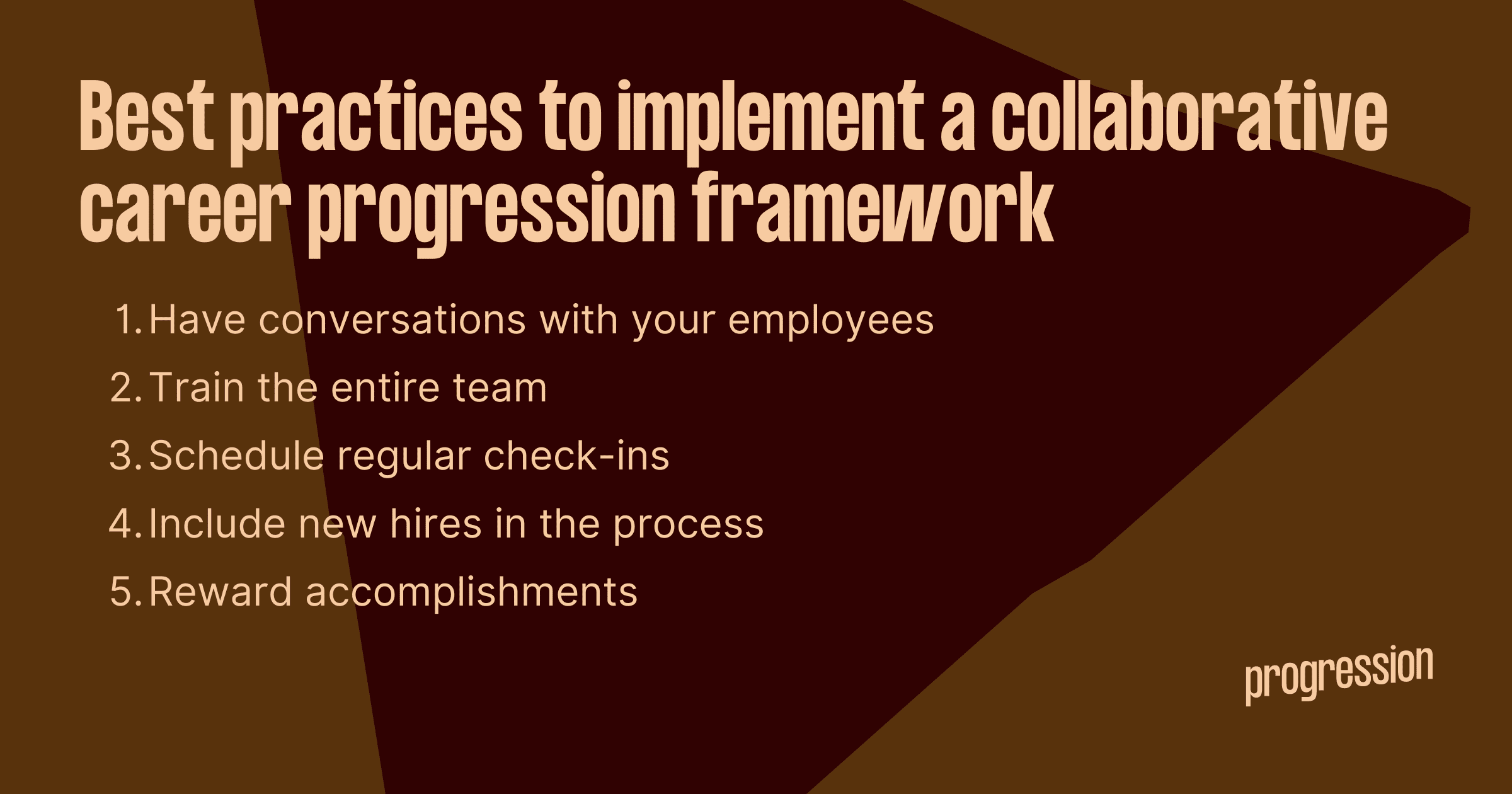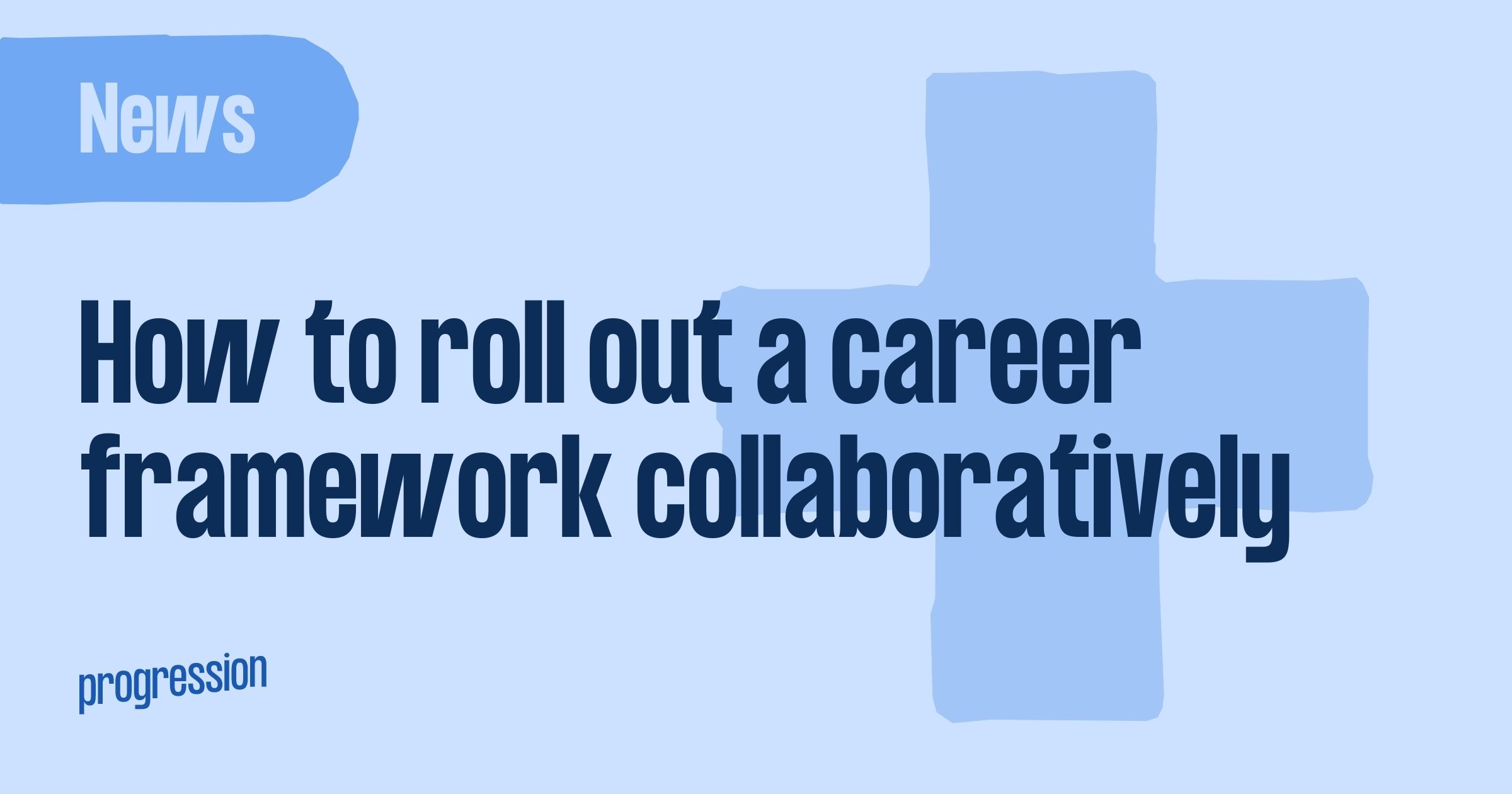Collaborative career frameworks involve a joint effort between employers and employees to map out career progression. They not only help employees reach their career aspirations, but also assist companies in achieving their business objectives.
It goes without saying, but when it comes to rolling out the frameworks, some methods are better than others. And while trial and error is part of creating your first career framework, being aware of best practices from the get-go can save you lots of wasted time and effort.
Keep reading to learn how managers and their teams can jointly set up career frameworks so all parties get the most out of the tool and overall experience.
Why roll out career frameworks collaboratively?
While the benefits are endless, here are some of the most compelling:
Increase employee engagement and retention
If your workforce is bored out of their minds, they won’t do their best on the job. (In case you didn’t know, a third of people looking to leave their jobs cite boredom as the main reason.)
Know how to remedy this? With a collaborative career framework. By proving you care about the trajectory of your employees’ career paths, they’ll feel like they’re growing careers, not just jobs.
This switch is essential to increasing employee engagement and retention.
Increase motivation and job satisfaction
Career development increases employee motivation and productivity since they have more realistic goals in terms of what they’re working towards.
Plus, supporting your employee’s career progression will create a more dynamic workplace in which overall job satisfaction increases.

Attract top talent
Happier employees are powerful brand advocates, and they’ll spread the word about your company to new candidates.
Additionally, this culture of collaboration will eventually form part of your company culture and core values. This further strengthens your case as talented people increasingly look for organizations with strong culture.
Close the skill gap
When you work with your employees to progress in their careers, they acquire skills your company may need to fill more senior roles.
Internal recruitment not only saves on the cost of hiring a new employee, but also allows your current team members to reach their personal career goals without having to return to the job market.
How to implement a collaborative career progression framework

There are wrong ways to go about setting up career frameworks jointly with employees, and there are right ways.
Here are some best practices to get you off on the right foot:
Have conversations with employees
Conversations, not frameworks. That’s the single most important tool in improving your employee’s career progressions. (It’s also the starting point.)
Open up communication. Simply ask your team members:
- What are your personal career goals and objectives?
- Where do you see yourself career-wise in 1, 3, 5, or 10+ years?
- What skills would you like to learn and/or develop?
- What do you need to help you succeed in your career? (This can include tools, education, assigned tasks, etc.)
The whole point is for your team to have clarity around progression in their roles so they feel fulfilled in their careers. (Need we mention happy workers are 13% more productive?)
Train the team
Next in line comes training and coaching sessions for all managers and members on their teams. Ensure they understand the basics of how a career progression framework works – again, both managers and employees.
Proper training is crucial to get buy-in from everyone, not just those rolling out the framework. After all, they’re meant to help your team design a career they love, not just a job they pass their time at.
Help employees truly progress in their careers
Try new ways to help employees develop themselves. This can be done through upskilling, networking and mentorship opportunities, among others. (Keep in mind that if you don’t invest in their training and development, someone else will.)
While you’re at it, align employees’ career goals with the company’s strategic objectives. In this way, your team members will be acquiring new skills while increasing your bottom line. It’s a win-win.
Schedule regular check-ins
Regular check-ins help track progress. You can identify problems, narrow down areas of improvement and celebrate accomplishments as they occur.
While quarterly check-ins are standard practice, that doesn’t mean yours can’t happen more frequently, especially during the elementary stages. This reinforces the fact that you’re as dedicated to your team’s career growth as much as they are.
Integrate frameworks with employees’ personal development plans
Incorporating the framework into your team’s personal development plans (PDPs) is a good way to bring the tool into their daily work experiences.
A career framework will help them adeptly identify which skills they need to achieve goals, hone current strengths and work on weaknesses (all of which is outlined in their PDP).
Include new employees
Make your framework a part of the onboarding process so new hires have visibility and transparency from the outset. This helps further engrain the frameworks into your company culture.
Plus, having the career progression framework as an integral part of the hiring process makes it easier to find the perfect ideal job candidate. Think of it as reverse engineering the skills you want the new employee to have.
Reward accomplishments
Recognizing employees for reaching major milestones, putting forth good effort and accomplishing their goals encourages them to keep growing. It also helps them refocus during rough patches.
Rewards can range from gift cards and extra paid time off to additional benefits, bonuses and public praise. (You’re only as limited as your imagination!)
Maintain a flexible framework
And finally, understand that as a manager, things will change with the career frameworks as you go along. Be open to that possibility. As we said in the intro, no framework is perfect (even less so if it’s your first).
Create. Implement. Change. Iterate. This constant cycle will eventually lead you toward career framework success.
Key takeaways
Rolling out a career progression framework collaboratively all boils down to setting up win-win situations for both employers and employees.
If your team members feel like they’re in charge of their own careers, they’ll become more engaged, more confident and just plain happier to be at your company. All of this only benefits your company as you’ll retain better talent for longer periods of time.
Take care of your talent, and they’ll take care of you. It’s that simple.










 Sign up with Google
Sign up with Google  Sign up with Email
Sign up with Email